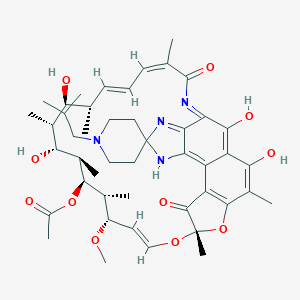Pulmonary tuberculosis
Adult: 150-450 mg daily, as part of multidrug regimen, given for at least 6 mth.
Oral
Nontuberculous mycobacterial infections
Adult: 450-600 mg daily, as part of a multidrug regimen, given for up to 6 mth after negative cultures are obtained. May reduce dose to 300 mg when given w/ clarithromycin (or other macrolides) and/or fluconazole (or related compounds).
Oral
Prophylaxis of Mycobacterium avium complex infections in immunocompromised patients
Adult: 300 mg once daily.




 Sign Out
Sign Out




